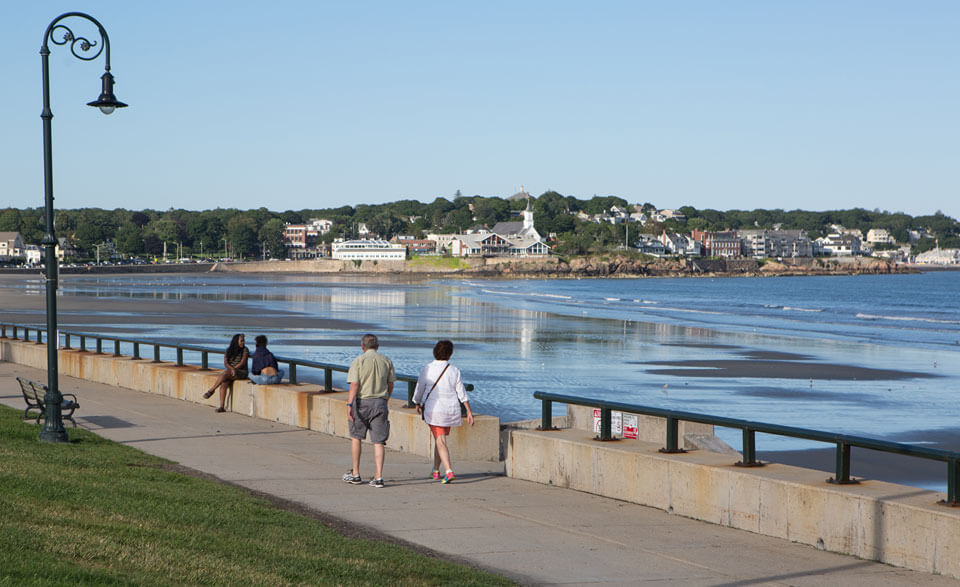NOAA Marks 45th Anniversary of the Coastal Zone Management Act
Helping communities manage development, promote healthy economies and people, and reduce polluted runoff.

A Stroll Along the Coastal Zone
Hardened and rocky shorelines, development, and recreation—this image of coastal Marblehead, Massachussetts, shows some of the many ways we use our nation's coastal resources.
October 27 marks the 45th anniversary of the landmark Coastal Zone Management Act (CZMA), which waved in a new era by recognizing the importance of safeguarding our nation's coasts, estuaries, and oceans.
The Act, passed by Congress on October 27, 1972, is designed to preserve, protect, develop, enhance, and restore the nation's coastal resources. The legislation led to a federal and state partnership program that balances the goals of promoting economic development and protecting the coastal environment.
The effort has increased public access to our coasts, protected and restored coastal habitat, and minimized the risk from coastal storms and other natural hazards. The partnership has helped communities manage development, promote healthy economies and people, and reduce polluted runoff.
The Coastal Zone Management Act, passed by Congress on October 27, 1972, is designed to preserve, protect, develop, enhance, and restore the nation's coastal resources.
"Obviously we still have our challenges," said Jeff Payne, director of NOAA's Office for Coastal Management, which works directly with coastal states and territories to administer the National Coastal Zone Management Program, "but the coast is undoubtedly in a much better place than it would be without this legislation and this federal and state partnership effort."
The hurricanes of 2017 affected many coastal areas. Guided by the CZMA over the past 45 years, the coastal programs have gained the experience, scientific information, and policies needed to address reconstruction and recovery needs. As a result, coastal communities stand a better chance of weathering future storms and day-by-day challenges. Two examples illustrate this approach.
The Texas community of Clear Lake, working in conjunction with the state's coastal management program, reclaimed an urban wetland that was once an abandoned golf course. The visionary nature of this approach was fully realized when this 200-acre wetland acted as a sponge during Hurricane Harvey, protecting nearby homes from floodwaters.
The Georgia Coastal Management Program is leading the way when it comes to recovery planning efforts. Completed for several coastal counties, the disaster recovery and redevelopment plans helped them identify how Hurricane Irma affected their infrastructure and provided a means of quickly moving forward with a cost-conscious damage-repair plan. Similar planning efforts are underway for the remaining coastal counties in the state.
In addition to the coastal zone management programs, this legislation also created another powerful state and federal partnership program: the National Estuarine Research Reserve System. This sister network of 29 sites, representing different biogeographic regions of the United States, protects more than 1.3 million acres of estuaries for long-term research, water-quality monitoring, and education. These picturesque sites are not only popular places for people to visit and enjoy, but also provide the scientific data and information coastal communities and the nation need to make decisions about the future.
The Coastal Zone Management Act is ever increasing in relevancy and importance, just as it was envisioned forty-five years ago.Read More
Did you know?
America's economic and environmental prosperity is directly linked to the health and resiliency of our coasts. It is projected that by 2020, approximately 39 percent of the U.S. population, over 133 million people, will live in coastal shoreline counties.

Get Social
Last updated: 06/16/24
Author: NOAA
How to cite this article